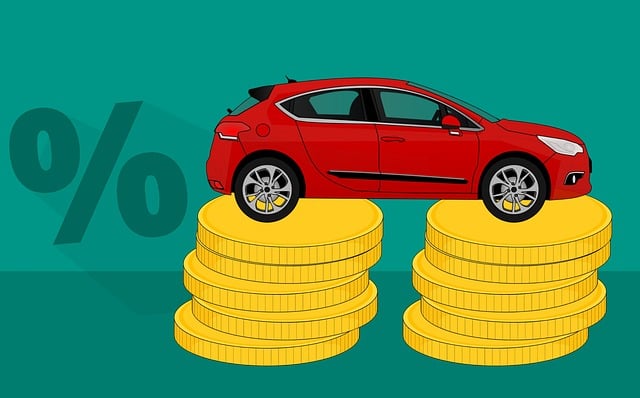This text delves into the complexities of Auto Insurance for High-Risk Drivers. It explains how insurance companies assess and price policies based on driver profiles, factoring in age, gender, vehicle type, location, driving history, and claims record. Key takeaways include:
Higher risk equals higher premiums: Young drivers, repeat offenders, and high-performance vehicle owners typically face higher rates.
Specialized insurers cater to high-risk drivers: These providers offer tailored coverage options that understand the unique needs of these drivers.
Factors influencing premiums: Beyond basic demographics, driving history, vehicle type, and location significantly impact costs.
Mitigating risks for better rates: Maintaining a clean driving record, taking defensive driving courses, and choosing appropriate coverages can lead to more affordable options.
* The evolving landscape: Telematics, data analytics, and autonomous vehicles are revolutionizing high-risk auto insurance, promising personalized, fairer pricing models.
For many, obtaining auto insurance as a high-risk driver can feel like navigating a treacherous labyrinth. With elevated premiums and often stringent coverage requirements, understanding your options is crucial. This comprehensive guide explores the intricacies of auto insurance for high-risk individuals, delving into profiles that trigger these challenges, factors influencing costs, and strategies to safeguard your financial interests. By demystifying the process, we empower folks to make informed decisions in the world of high-risk driver auto insurance.
Understanding High-Risk Driver Profiles

High-risk driver profiles encompass individuals who engage in behaviors or possess attributes that statistically increase the likelihood of accidents and subsequent claims. This category includes, but is not limited to, young drivers, those with multiple traffic violations, and owners of high-performance or modified vehicles. Insurance companies use these risk factors to determine premiums for auto insurance for high-risk drivers, ensuring rates reflect the potential for increased claims.
Understanding these profiles is crucial in navigating the complexities of auto insurance for high-risk individuals. Insurers assess each driver’s unique circumstances, including their driving history, age, gender, location, and vehicle type, to assign appropriate coverage and pricing. By recognizing these risk factors, drivers can make informed decisions when choosing a policy that aligns with their needs while adhering to legal requirements.
The Challenges of Securing Auto Insurance

Securing auto insurance as a high-risk driver can be an uphill battle, given the heightened concerns surrounding safety and potential claims. Insurance companies often view individuals with a history of accidents, moving violations, or subpar driving records as posing a greater risk to other drivers on the road. This perception leads to higher premiums, stricter coverage requirements, and even denial of coverage in some cases. The challenges don’t end there; high-risk drivers may also face limited options when shopping for insurance, as many traditional providers shy away from this segment due to the perceived risks.
These difficulties necessitate a strategic approach to finding suitable auto insurance for high-risk drivers. It’s crucial to compare quotes from specialized insurers that cater specifically to such individuals, as they are more likely to understand and accommodate the unique challenges faced by high-risk drivers. Additionally, maintaining a clean driving record through defensive driving courses, adhering to safety guidelines, and demonstrating responsible behavior can significantly improve chances of obtaining affordable and comprehensive coverage.
Factors Influencing Premium Rates

When it comes to auto insurance for high-risk drivers, several factors significantly influence premium rates. These include the individual’s driving history, which can determine if they’ve had previous accidents or violations. Insurers also consider age and gender, as statistics show young male drivers are more prone to risky behavior on the road. Additionally, the type of vehicle owned plays a role; high-performance cars often come with higher premiums due to their potential for more severe damage in accidents.
Other factors such as where the driver lives can’t be overlooked. Areas with higher crime rates or dense urban populations may result in elevated insurance costs. Similarly, if the driver has multiple vehicles insured under one policy, this could lead to a reduction in overall premiums due to bundled discounts. Understanding these influences is key for high-risk drivers looking to navigate the complexities of auto insurance and find the best coverage at a price that fits their needs.
Exploring Coverage Options for High-Risk Individuals

For high-risk individuals seeking auto insurance, understanding coverage options is crucial. This often includes evaluating liability limits, which protect against financial loss in the event of an accident caused by the insured driver. Higher liability limits can be beneficial for those with a history of claims or traffic infractions, ensuring they are adequately covered. Additionally, exploring optional coverages like collision and comprehensive insurance can provide enhanced protection for high-risk drivers. These policies safeguard against damages to one’s vehicle, which is especially important given the higher likelihood of accidents.
Understanding deductibles is also key. While a lower deductible may be appealing, it often means paying more out of pocket in case of a claim. High-risk individuals might consider a slightly higher deductible for significant savings on premiums. Furthermore, comparing quotes from multiple insurers specializing in high-risk auto insurance can help secure the best rates and coverage tailored to individual needs.
Safeguarding Your Financial Interests

When you’re a high-risk driver, it’s crucial to understand that auto insurance isn’t just about covering your vehicle—it’s about safeguarding your financial interests. High-risk drivers often face higher premiums due to their increased likelihood of accidents and claims. This means that choosing the right coverage is essential to protect yourself from significant out-of-pocket expenses in the event of a collision.
By opting for comprehensive and adequate auto insurance for high-risk drivers, you can ensure that medical bills, repairs, or legal fees are covered, minimizing your financial burden. It’s also important to review your policy regularly and adjust it as needed to reflect changes in your driving record or circumstances, ensuring you’re always adequately protected.
Building a Positive Driving History

Building a positive driving history is paramount for high-risk individuals seeking auto insurance. This means demonstrating safe and responsible driving habits over time. It starts with maintaining a clean driving record, free from accidents and traffic violations. Each year without incident contributes to an improved risk profile, making it easier to find affordable car insurance for high-risk drivers.
Additionally, completing defensive driving courses or participating in safety programs can further enhance your history. These actions signal to insurance companies that you’re committed to improving your driving skills and minimizing risks on the road. As a result, insurers are more likely to offer competitive rates, reflecting your positive changes and reducing the financial burden associated with high-risk auto insurance.
Common Misconceptions about High-Risk Insurance

Many individuals who require auto insurance due to a history of risky driving behaviors often face common misconceptions about their coverage options. One such misconception is that high-risk auto insurance is prohibitively expensive, with premiums skyrocketing due to their unsafe driving record. However, this isn’t always the case; while it’s true that these policies may be more costly, they offer tailored protection for drivers who might struggle to find coverage elsewhere. The pricing varies based on several factors, and responsible driving behavior over time can lead to better rates.
Another common misunderstanding is that high-risk insurance only caters to extreme cases, like multiple at-fault accidents or DUI convictions. In reality, these policies are designed to accommodate a wide range of risky driver profiles. From young drivers without much experience to individuals with a history of moving violations, various factors contribute to an individual’s risk profile, and high-risk auto insurance is flexible enough to cover them all.
Navigating the Claims Process Effectively

Navigating the claims process as a high-risk driver can seem daunting, but understanding the steps involved can help streamline the experience. The first step is to contact your auto insurance provider immediately after an accident. They will guide you through the initial assessment and provide guidance on what documentation is required for filing a claim. This typically includes reporting details such as the date, time, location, and parties involved, along with any medical information related to injuries sustained.
It’s important to keep records of all communications, policy details, and documents exchanged during this process. Your auto insurance provider will assign a claims adjuster who will review your case and determine liability. Regularly updating them with relevant information ensures a smoother claims journey. Be prepared for potential delays and have patience throughout the assessment and settlement phases, as these can vary based on individual circumstances.
Staying Informed: Recent Trends in High-Risk Auto Insurance

The landscape of auto insurance for high-risk drivers is continually evolving, reflecting shifts in societal and technological trends. In recent years, we’ve seen a surge in demand for more flexible and personalized coverage options. Insurers are responding by offering innovative policies that cater to specific high-risk profiles, from young drivers with limited experience to individuals with multiple traffic violations. This shift towards tailored solutions is driven by advanced data analytics and the integration of telematics devices, enabling insurers to accurately assess risk and provide fairer rates.
Additionally, the rise of autonomous vehicles has created new opportunities for high-risk drivers. As self-driving technology matures, some insurance companies are exploring usage-based models that could potentially reduce premiums for safe and responsible drivers. This trend promises to revolutionize auto insurance for high-risk individuals, making coverage more accessible and affordable while promoting safer driving habits.
